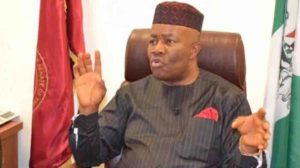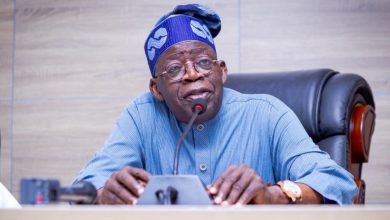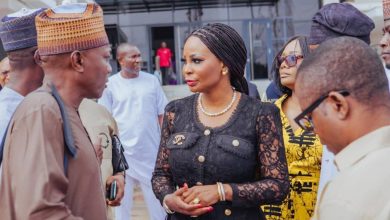NDDC’S Revivalist Initiatives: Before We Kill The Sickly Child With Drugs Overdose
By Substance Udo-Nature

“NDDC Master Plan has been abandoned. The template is okay; but what we expect is an in-depth, progressive plan so that successive managers of NDDC will have a document to work with”
– Professor Jasper Jumbo
It began approximately 63 years ago: Sir Henry Willinks Commission (1958); Niger Delta Development Board – NDDB (1960); Presidential Task Force on Niger Delta or “1.5% Committee” (1980); and Niger Delta Environmental Survey – NDES (1997). These were sluggish progenitors to the Oil Minerals Producing Development Areas Commission – OMPADEC (1992); Niger Delta Development Commission –NDDC (2000); Niger Delta Masterplan (2001); Ministry of Niger Delta Affairs –MNDA (2008); and Niger Delta New Vision (2016).
But even history must be amused to observe that at no time in the serial failed experiments at developing the Niger Delta had there ever been such a flurry and flaunting of conflicting initiatives, whether as stop-gap or long-term, than in the last quarter of 2019 and first three months of 2020 of drum-beating by the Federal Government and Stakeholders of the Niger Delta Region: Interim Management Committee – IMC (Tuesday, October 29, 2019); Presidential Monitoring Committee – PMC (Tuesday, February 20, 2020); Presidential Advisory Committee – PAC (Tuesday, March 20, 2020); revival of BRACED Commission by South-South Governors (Thursday, March 5, 2020), etc.

Expressively, in the last three weeks or months, all for the purpose of finding potent and sustainable solutions to the pandemic plight of the stubborn NDDC, not fewer than four fresh initiatives may have been launched or revived by the federal and state governments to enforce a potential new dawn for the Niger Delta. The fresh advocators feign ignorance or pretend to have forgotten the timid existence of an extant prototype called Niger Delta Master plan.
RELATED: National Assembly Set to Pass NDDC Budget of N346 Billion
The Niger Delta Region and NDDC – its sickly and profligate child at the mercy of time and man – have become like already diagnosed patients at the risk of being suffocated by overdose of drug prescriptions by a team of highly competent and notorious quack doctors competing frantically to register their names or sell their drugs, even if there were mere placebos. Yet, we must conquer the temptation to see these concerted efforts supposedly aimed at streamlining and redirecting a recalcitrant mandate as a dissipation of energy or whipping of a dead horse, although the pathology and scorecard seem to give that ominous impression.
In retrospect, earliest attempts at finding lasting solutions to the cyclical adverse effects of oil exploration and exploitation through interventionist development models for the Niger Delta date back to the 1950s, when the Sir Wellinks Commssion was launched in 1958, followed closely in 1960 by Niger Delta Development Board – NDDB. Then came OMPADEC, which was chaired by today’s President Muhammadu Buhari, which died without any tangible evidence in the Niger Delta region, in sharp contrast to what the north could boast of.
Between the death of OMPADEC in 1995 and the birth of NDDC in 2000, there were two expedient models. One was a Presidential Task Force in 1980, codenamed “1.5% Committee”, wherein a paltry 1.5% of the Federation Account was dedicated to tackling the challenges in the Niger Delta. The other was the Niger Delta Environmental Survey (NDES), similar in scope and pretext to the Ogoni Clean-Up.
On June 10, 2000, former President Olusegun Obasanjo established the Niger Delta Development Commission (NDDC).The Vision was “to create a lasting solution to the socio-economic challenges of the Niger Delta Region”. A line of the Mission Statement of the Commission, inter alia, reads, “to facilitate the rapid, even, and sustainable development of the Niger Delta into a region that is economically prosperous, socially stable, ecologically regenerative”.
This, by, extension would include formulation of policies and guidelines for the development of the Niger Delta area; conception, planning and implementation, in accordance with set rules and regulations, of projects and programmes for sustainable development of the region. That necessitated the design of the Niger Delta Masterplan – a holistic template or roadmap to follow in ameliorative response to the multifaceted damages oil exploration and exploitation have caused the area.
About eight years later, as part of the solution discourse, late President Musa Yar’adua founded the Ministry of Niger Delta Affairs on 10th September, 2008, with late Obong Uffot Ekaette as its pioneer Minister. Again, the mandate was “To formulate and execute plans, programmes and other initiatives as well as coordinate the intervention activities of agencies, communities, donors and other relevant stakeholders involved in the development of the Niger Delta Region”. Then came Niger Delta New Vision (NDNV) in 2016, that was launched with theatrical momentum and oversized promises “for renewed, overall rapid development of the Niger Delta”.
The last two months in particular have had the Presidential Monitoring Committee (PMC); Presidential Advisory Committee (PAC); and the revival of the “BRACED Commission”, a socio-economic development think-tank designed 10 years ago by the South-South Governors of Bayelsa, Rivers, Akwa Ibom, Cross River, Edo and Delta.
But individual and consensus verdict today is that these mushrooming interventions are invertebrate. Like many others, a disappointed Amb. Sam Edem, one of the pioneer MDs of NDDC and co-contributor to the Niger Delta Master plan, October last year spat on the snail-speed growth of the region and fell bad that the masterplan had been sidelined.
In painful corroboration, Professor Jasper Jumbo, who started his carrier in the petroleum sector in the early 1970s as Head, Petroleum Research and Geo-environmental Analytical Laboratories at Schlumberger, who is also said to have been part of the eggheads that engineered the formation of OMPADEC and NDDC, said all is not well with whatever have been formed or done over the years in the name of salvaging the Niger Delta Region.
“NDDC Master Plan has been abandoned. The template is okay, but what we expect is an in-depth, progressive plan so that successive managers of NDDC will have a document to work with. If we have a good Master plan for Niger Delta, whether it is Buhari, whether it is Osinbajo, whether it is you or me, there is a blueprint on Niger Delta. ..If there is a modification, it will be within the context and ambit of what is established so that anybody can come and implement it. That is how people develop and that is why it is called MASTER PLAN”, the Professor told Kelvin Ebri of Guardian Newspaper in November, 2019 in an interview in Port Harcourt, titled, “Save NDDC Before it is Irretrievably Lost”.
The professor mentioned and narrated how late Uffot Ekaette, Sen. Melford Okilo; Sen. Ifeanyi Ararume, Sen. Martims Yellowe who, at Hallie Selassie Street, OMPADEC House, Asokoro, Abuja, gave the 14 founding provisions that were to sustain NDDC against the idea of having it completely under federal government control.
Since the establishment of the NDDC on June 5, 2000 and its incipient but promising take-off at 8, Oluremi Street, Old GRA, Port Harcourt with Engr. Godwin Eyarubere Omene as its pioneer Managing Director, it would appear that it has always been at the conception stage – approximately 19 years after. This can easily be seen in the periodic grandstand launch of fanciful and superficial initiatives by successive administrations that only make news and nothing more in material terms. Otherwise, by today, there would have been consoling legacies to point to.
So, is this the time government and the stakeholders must introduce more initiatives, or they should return to the drawing board to see, in the words of late literary doyen, Prof. Chinua Achebe, where the rain started beating them with the Niger Delta Materplan on their head?
Although they have their merits, there is a weak thread of duplicated objectives running through the Presidential Monitoring Committee; Presidential Advisory Committee; and the purported revitalized BRACED Commission that makes the initiatives laughable victims of showmanship. Let’s pretend not to know that each of these committees, typically and organically, needs huge financial trappings to survive. The situation calls for synergy, and no synergy could be as empirical as the Niger Delta Master Plan.
One of the greatest mistakes successive federal administrations keep making has been the appointments of cronies or godsons and highly ambitious politicians on nomination by their benefactors to man the Commission.
Maybe we should begin to dig into the mystery of the practicable tradition that has had nearly all former MDs of the NDDC either resigned or emerged with very strong financial muscles to fight the gods in future political battles in their respective states. Can the IMC begin that demystification beyond what meets the eye?




